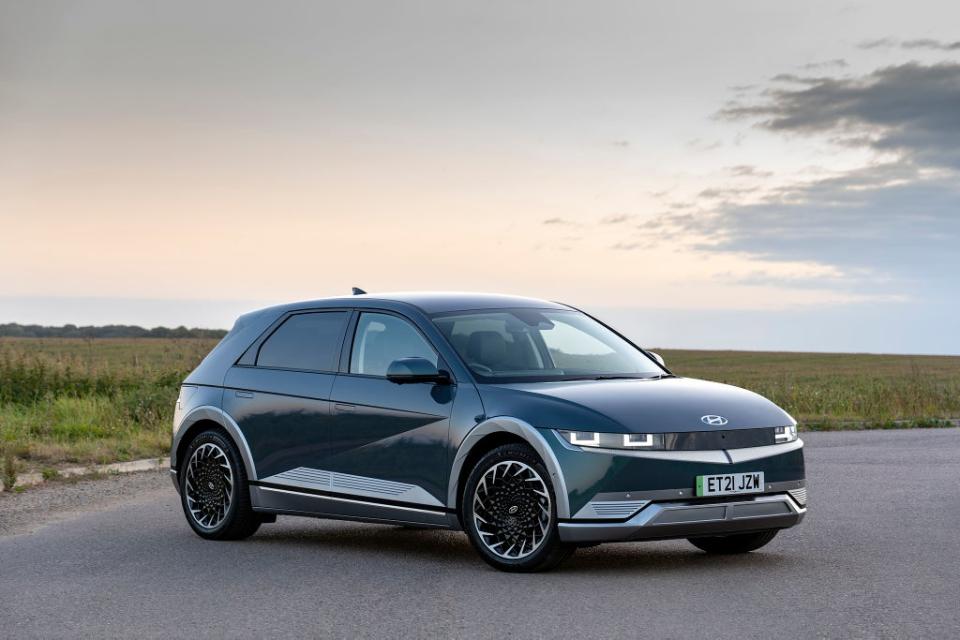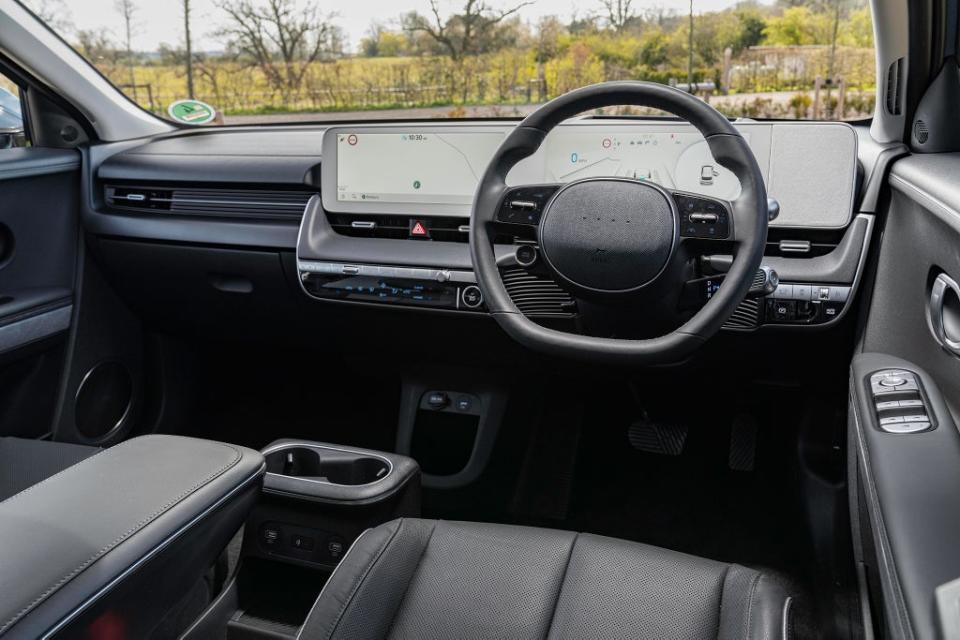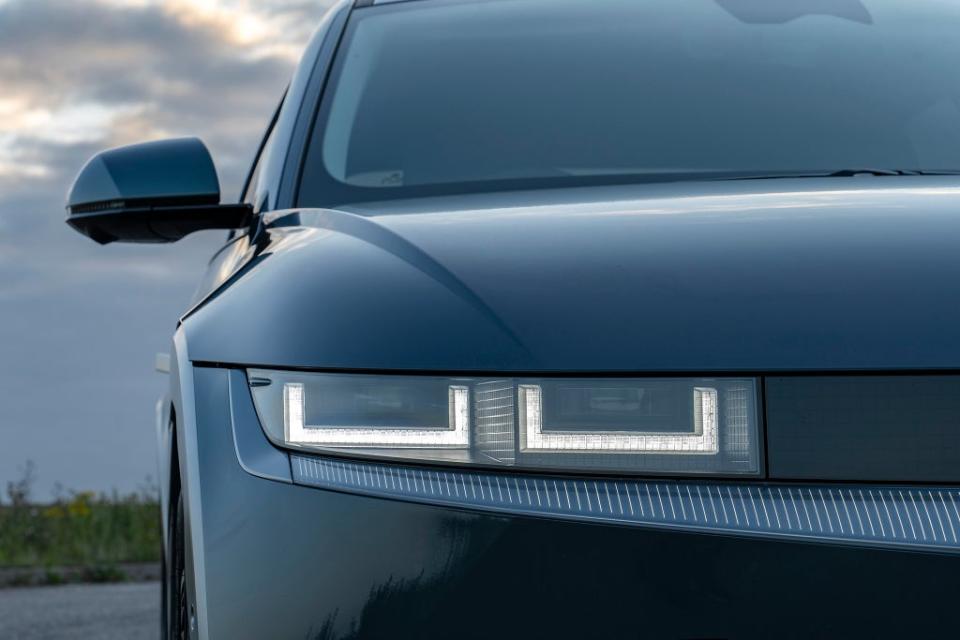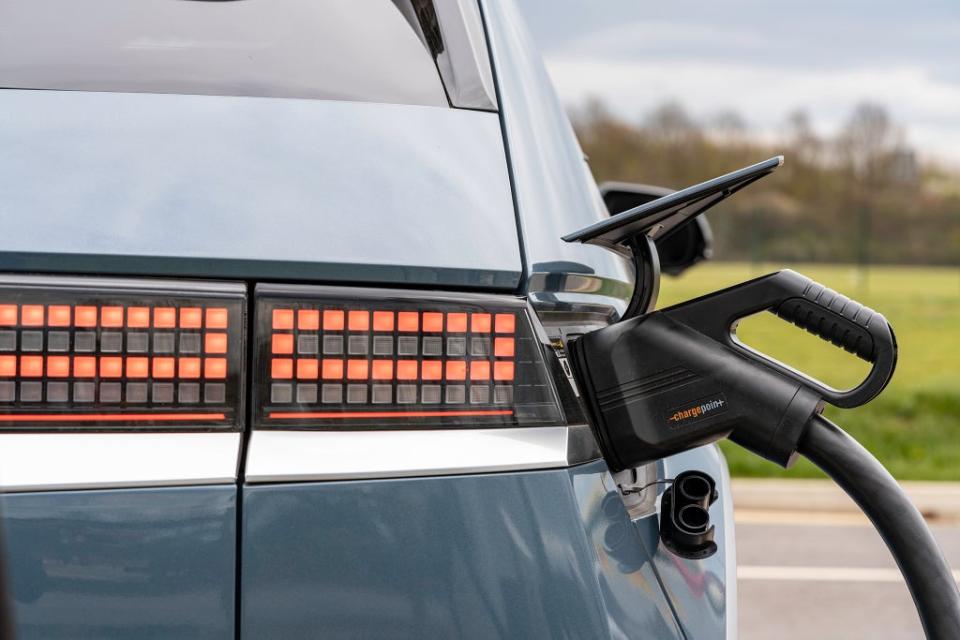Car review: Can you afford (not) to buy the full-package Hyundai Ioniq 5?

Such is the pace of progress in the development of the electric car that it makes sense to buy the newest model available. Whereas with fossil-fuelled cars you can quite happily buy a model a few years old and be confident that it is still reasonably up to date, in terms of its peers, an electric car model that is even a few years old is hopelessly outclassed. It will function perfectly well, but have a frustratingly short range, take longer to charge and have inferior performance compared to the newest stuff.
There isn’t much point, at this stage in the cycle, therefore, in buying second-hand or indeed a new car where the design dates back a bit. What this means for the government’s laudable drive to get us all into electric vehicles as soon as possible is painfully apparent: it is going to be beyond the means of most motorists. Perhaps we’ll be lucky to get away with just driving smaller (ie cheaper) electric models, which would also be good for hopelessly overcrowded city streets and country lanes trying to accommodate the boom in bloated SUVS, but for many it might feel like too much of a sacrifice.

The new Hyundai Ioniq 5 makes the point eloquently, if quietly, and demonstrates the wonderful potential of the switch to electric, but also the principal obstacle – cost. The new Ioniq is much faster (a couple of seconds quicker to 60mph), bigger, about a fifth more efficient, boasts a much bigger range (230 miles vs 155 miles) and vastly more sophisticated and stylish then the model it replaces, which was launched only in 2019. Then again, it’s about one-fifth more to buy – at £40,000-plus.
It is the best looking electric car on the road, perfect in almost every respect. It’s rather like the designers used origami to come up with all the exaggerated creases and lines, which look as through they’ve been ironed on and razor sharp enough to shave your finger tips off. It’s a basically traditional shape, like an old VW Golf, but given a throughly modern treatment.

In a way it’s easier to create some swooping coupe like a Porsche Taycan or Tesla Model 3, or even the Ioniq’s Hyundai group sibling, the Kia EV6, if you don’t have to consider where to stick a buggy or get a granny in the back. To create something this stunning and practical is a rare achievement. It’s a better package than its closest rivals, the Volkswagen ID.4 (admittedly boasting a superior interior) or the Ford Mustang Mach-E (marginally a better drive). Among other things, this latest Hyundai proves the remarkable leaps forward the Korean auto industry has been making – near enough world leaders in battery electric cars now.
THE SPEC
Hyundai Ioniq 5
Price: from £40,945
Engine capacity: single electric motor, rear-wheel drive powered by 77.4kWh battery
Power (bhp): 226
Top speed: 114mph
0-60mph: 7.3 secs
Fuel economy: 172mpg equiv
Range: 230 miles
CO2 emissions: 0
The detailing is luscious: raised white lettering for the badging, blocky LED headlights and indicator units that resemble Rubik’s cubes, really dramatic alloy wheels reminiscent of a comet hurtling along the road, full-width screens on the dash. It makes for an eye-catching, aspirational, envy-inducing car, but in a nice way. You smile just to see such a combination of craft and technology. More prosaically, it’s a five-door hatch with SUV overtones about it, plenty big enough for a family, easy to drive and park, with state-of-the-art connectivity and able to cope with the very fastest of the newest public charging stations, run by the likes of Gridserve, once you’ve located one.
As you can tell, it’s difficult to find fault with the Ioniq 5. It’s quiet, the ride is soft and the steering very light, so not maybe what you’d call a driver’s car, but it exudes serenity and encourages a reserved, calm style of driving. There is a bit of an electric whine if you really put your foot down, but it is always composed. The touchscreen graphics are clearer and safer to use than most, with the usual safe option of buttons on the steering wheel available. I particularly enjoyed the way a real-time view of the flanks of you car pops up in the dash when you’re turning or close to a kerb, the better to protect cyclists. There’s even a domestic three-pin plug in the back, for you to run a fridge or a sound system I suppose. Of course you can also plug your Hyundai into the mains, if you insist, in an emergency.

Your main problem with an Ioniq 5 will be getting your hands on one, because of the shortage of computer chips and what I’d anticipate will be a bit of a dash to go green. I can’t yet vouch for how reliable all the sophisticated kit will prove in service, though, such as the electric parking brake, exterior cameras and engine management software.
As a general point, as I say, the Hyundai Ioniq 5 – a battery-only model, no hybrids – marks a significant technological achievement, and one that owes much to capitalism, as Boris Johnson would add, but at half as much again as the national average annual wage, it’s difficult to see how electric cars are going to catch on with buyers, even if they can take advantage of leasing or PCP deals (about £500 a month in this case). I’d usually recommend waiting a little while to buy one used, but by then even this model will be old hat.

It’s going to be hard for drivers to keep up – in every sense – with the new gen battery electric vehicles. The electric car is in most respects a far better proposition than an equivalent petrol or diesel model, and the Ioniq 5 is sumptuously desirable. The disappointing thing is that they don’t seem to be getting much cheaper. That’s a problem for the planet, as well as us punters.
Read More
Kia EV6: 60 miles in four and a half minutes of charging
Car review: The Ford Mustang Mach-E sits firmly in the middle of the road
Car review: the Porsche Taycan Cross Turismo is packed with style and substance
Kia EV6: 60 miles in four and a half minutes of charging
Car review: The Ford Mustang Mach-E sits firmly in the middle of the road
Car review: the Porsche Taycan Cross Turismo is packed with style and substance

